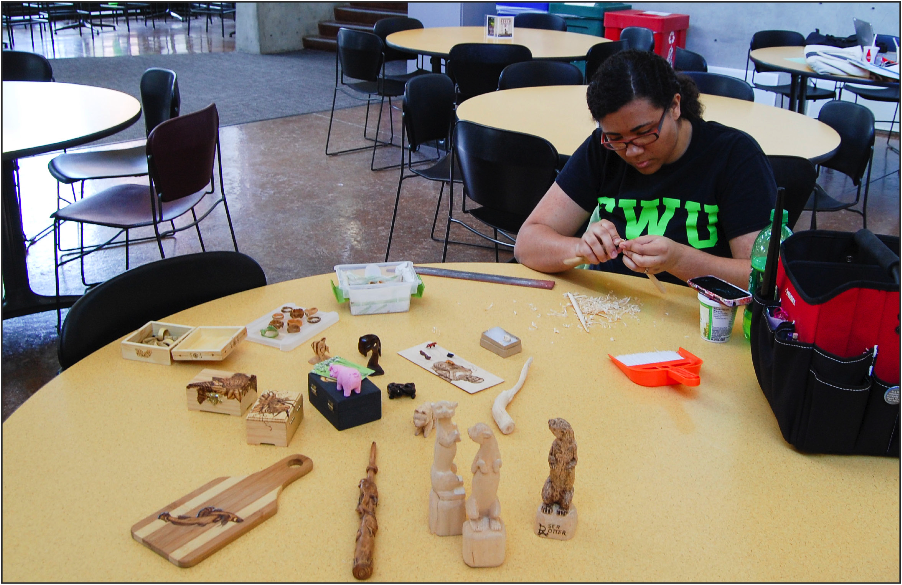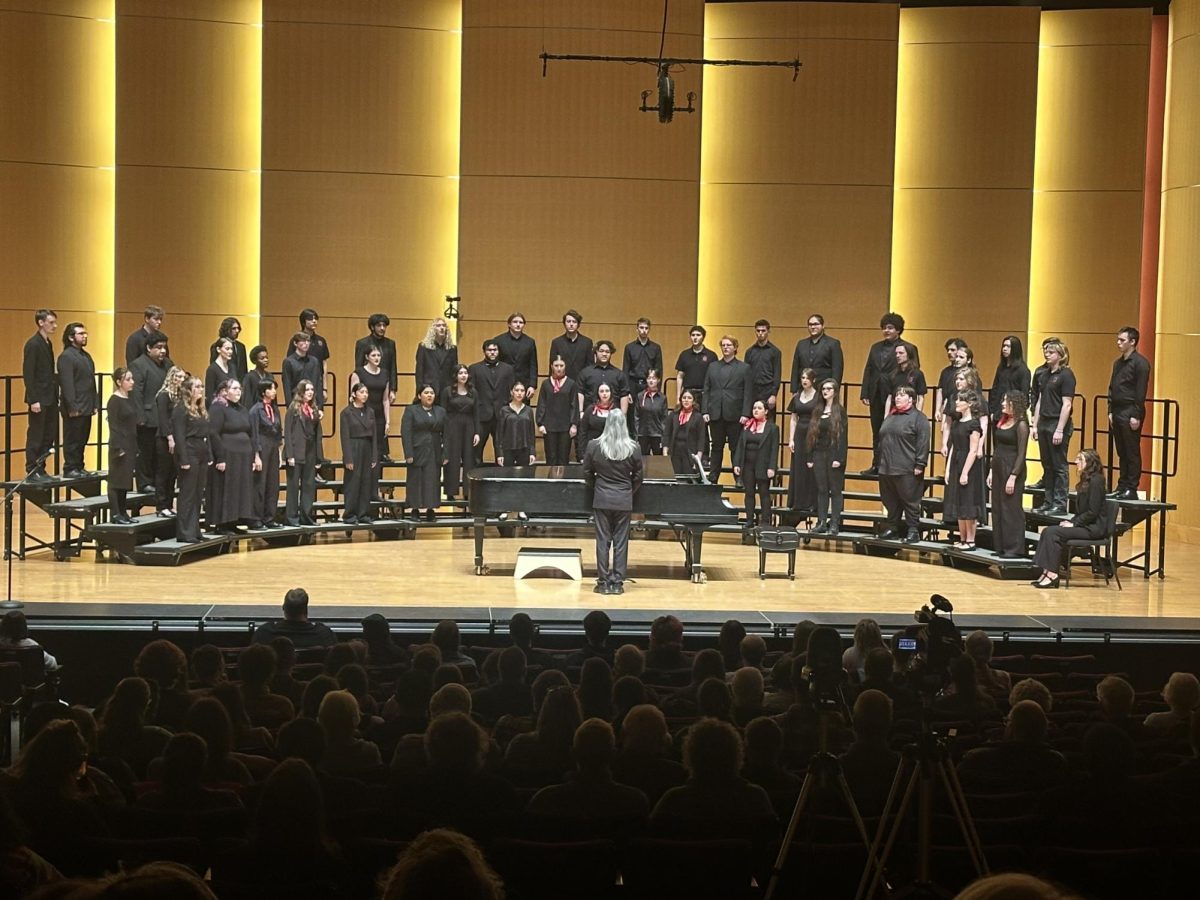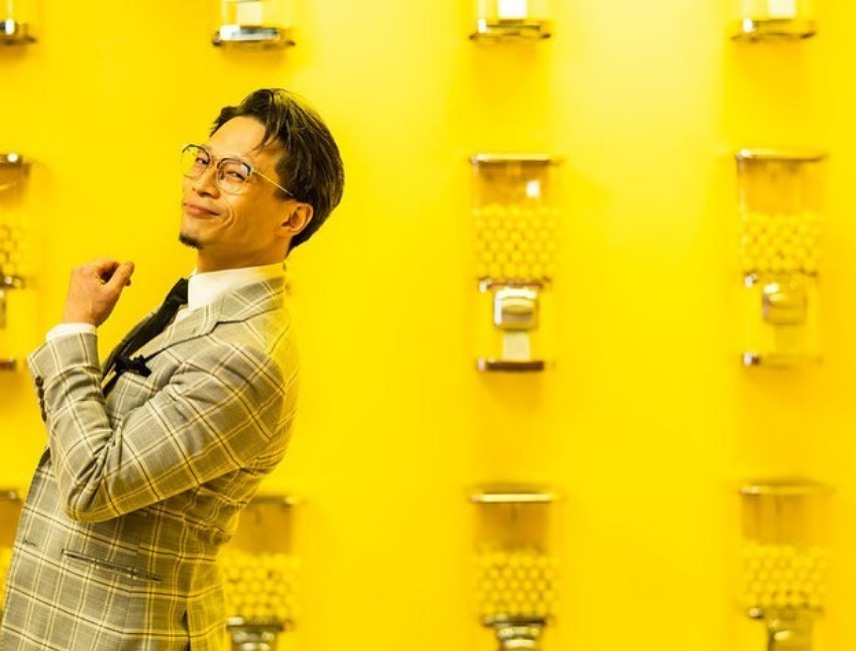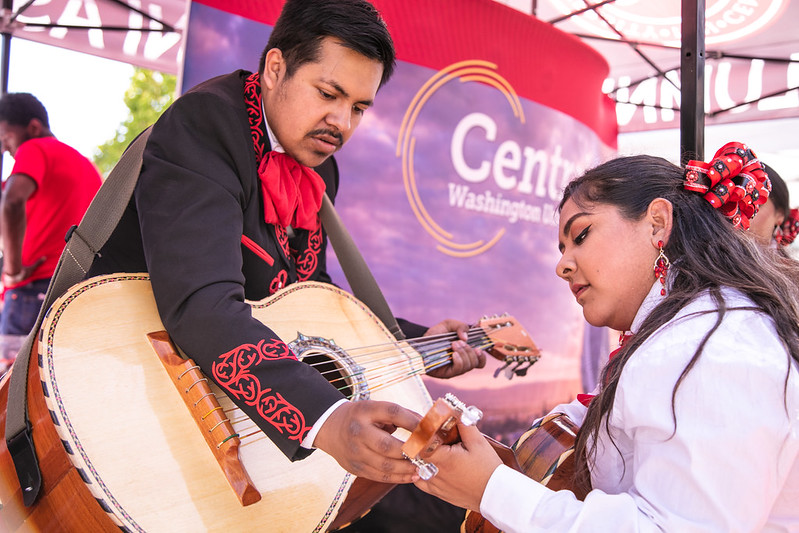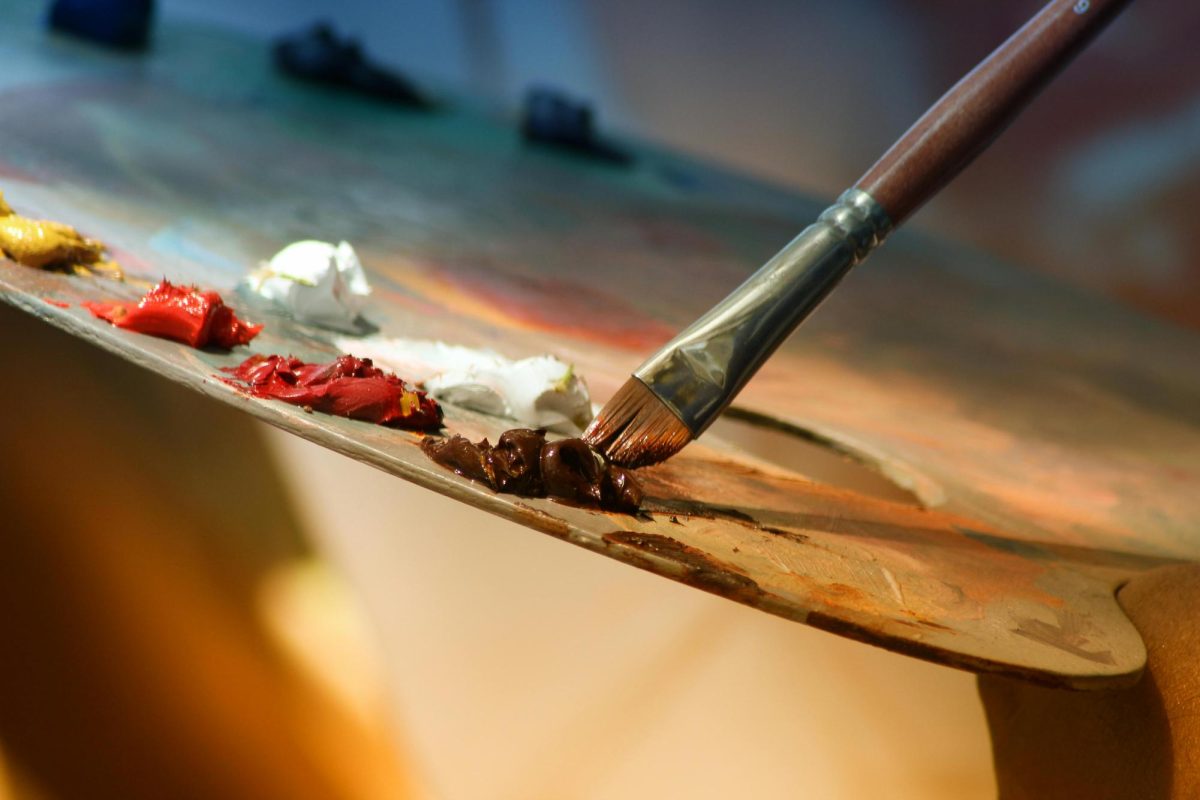BY Maria Harr
Staff Reporter
Almost every week, senior anthropology major Kailonna Crawford sits at a round table in the SURC and carves. Passersby slow down to watch or check out her numerous completed pieces spread on the table before her.
“I like it when I can make people smile,” Crawford said, “or just bring something interesting to their day.”
Crawford, who has been carving for about ten years, says she introduces herself as a woodcarver before an anthropology major. Her interest had been piqued when she was about six-years-old, when her aunt brought her to a woodcarving show. Around five years later, she brought up the idea of woodcarving to her grandfather, and they both began the hobby.
“I was a 12-year-old with X-Acto knives,” Crawford said.
She carved sporadically until her senior year of high school, when she joined a local woodcarving group. She still has the carving from her time spent in the group.
After getting serious about woodcarving, Crawford entered a Bremerton competition in 2010 with a carved dolphin and came first in her division. Since then she’s entered two other competitions and moved up to an intermediate rank.
When she was younger, Crawford had trouble concentrating on things. Through carving, Crawford was able to focus, and found it very comforting. Later, she was diagnosed with ADHD, and it all made sense, but carving was still the place she went as a retreat.
“Carving has always been my quiet place,” Crawford said.
Crawford isn’t entirely sure what drew her to woodcarving but thinks it may have had to do with all the time she spent in the wooded area behind her grandparents’ home.
In addition to influencing her carving, time at her grandparents’ house also gave her a love for gardening which she’s brought to Central. For this year’s SOURCE, Crawford gave an audio presentation on the campus vegetable garden.
Crawford’s advisor, Mark Auslander, an associate professor in anthropology and museum studies and director of the Museum of Culture and Environment, is grateful that Crawford shed light on the little known vegetable garden. Auslander found out Kailonna was a woodcarver in their very first conversation together and has since enjoyed her public carving.
“Kailonna generously shares the art-making process with the general community,” Auslander said.
Auslander has seen in Crawford a deep and spiritual connection to her carving, linking what she does to mask making in certain African cultures. Auslander explains that carving is seen as a “deeply spiritual undertaking,” as trees are seen as the home of ancestors. Carving from a tree is to embody those ancestors.
To Auslander, what Crawford does in the SURC most Thursdays is a great contribution to the school. Not only has Auslander seen friendships begin from people taking the time to sit down and talk over Crawford’s carvings, but he’s also seen a greater awareness of art.
The woodcarving she does in the SURC brings art to the community, making art more public, which Auslander wholeheartedly applauds. Auslander sees in Crawford a gentle and understanding spirit who wants to share her art with the world.
“She’s not in it for the money or to display in a gallery,” Auslander said. “I greatly admire her for that.”
Crawford has contributed to not only the minds of Central’s community, but also their senses of touch. Crawford is allowing the museum to hold several animal figures, a rabbit, eagle, bobcat and puppy, in their newly opened exhibit. The figures will be an interactive learning aid in the museum for not only children to pick up and feel, but also for the vision impaired. Auslander thinks it will help museum-goers to learn, and so does Crawford.
“Think of how many nerve endings we have in our fingers and hands,” Crawford said. “We were definitely meant to learn with them.”
History senior Marissa Hopkins proudly owns a piece of Crawford’s work: a carved dragon ring with a Montana sapphire mounted as if it’s going to consume it, given as a birthday gift from Crawford.
Hopkins and Crawford met two years ago in a museum curating class. There, they fostered a friendship in conversations after class and decided to found the Museum Club last fall quarter. Crawford is head of the club PR while Hopkins is the president.
Hopkins was a little surprised to see Crawford carving in the SURC when Crawford started about a year ago.
“I knew that we’d talked about carving, but it hadn’t clicked until that day,” Hopkins said. “I think she’s got a lot of talent.”
Normally rather shy, Crawford says carving in the SURC helps her to talk to people. When she was originally considering carving in public, someone she met during the Occupy Movement told her to go for it, and Crawford did. She used to be embarrassed, worrying about what people think, but now seems very comfortable at her regular table in the SURC.
In the future, Crawford plans to keep carving in her life, but as a hobby and not a job. Crawford wants to get a job at museum and travel the world, particularly places like Bali and Central Africa that have strong wood carving cultures.
Crawford is usually sitting at the round tables in the SURC on Thursdays between 3-6 p.m. and enjoys talking about her art.
“People should stop by and engage her to talk about woodcarving,” Hopkins said.


